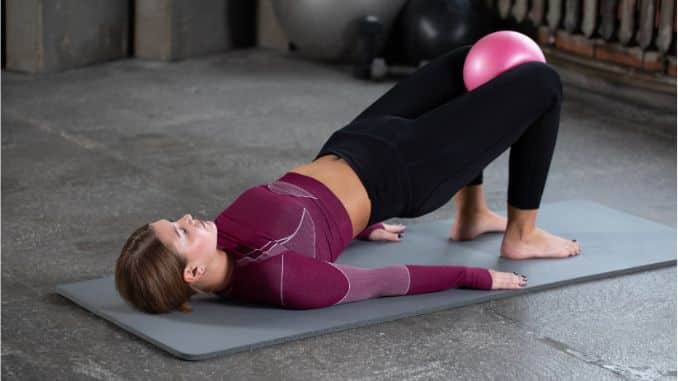If you spend long hours in a seated position—working at a desk, driving, or watching TV—you may unknowingly be encouraging a posterior pelvic tilt, making a targeted posterior pelvic tilt exercise essential for restoring proper posture.
This condition occurs when the pelvis rotates backward, causing the lumbar spine to flatten and the glutes and hamstrings to tighten.
Left unaddressed, this misalignment can lead to hip pain, reduced range of motion, poor posture, and also an increased injury risk—especially in the lower spine.
The good news? You can correct posterior pelvic tilt and restore the natural curve in your spine using a targeted set of posterior pelvic tilt exercises that strengthen the core muscles, stretch the hip flexors, and improve pelvic position control.
Furthermore, let’s jump into the step-by-step exercises that help fix posterior pelvic tilt effectively.
Step-by-Step Posterior Pelvic Tilt Exercises
1. Glute Roll
Starting Position:
- Sit with knees bent, feet flat on the floor, and a foam roller under your glutes.
- Cross your right leg over your left leg, resting your ankle on your opposite knee.
- After that, slowly roll forward and backward, massaging the glutes.
- In addition, do 1 set per side for 30–60 seconds.
Loosens tight glutes and then improves circulation to the posterior pelvic region.
2. Hamstring Stretch
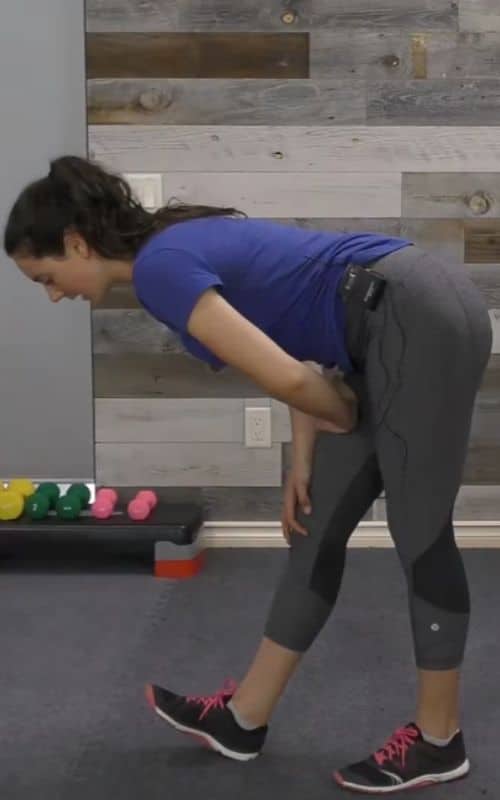
- Basically, stand tall with your feet shoulder-width apart.
- Extend one straight leg in front of you with your heel on the floor and toes up.
- Bend forward at the hips, keep your back straight, you should feel a stretch in the hamstring (back of the thigh) of the extended leg.
- After that, hold for 20–30 seconds per side.
Tight hamstrings can pull the pelvis backward—this stretch relieves that tension.
3. Cobra / Upward Dog
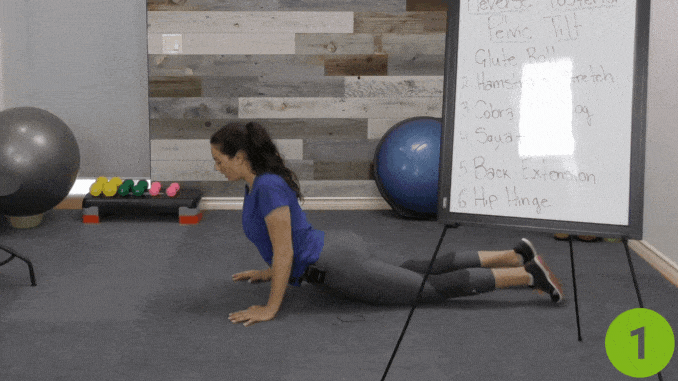
- Basically, lie on your stomach, hands beneath your chest, legs extended.
- Press upward through your hands, arching your back gently into Cobra.
- For Upward Dog, lift the thighs off the floor and then extend arms fully.
- Hold 20–30 seconds.
Restores lumbar lordosis and counteracts posterior tilt.
4. Squats
- Stand with feet shoulder-width apart, toes slightly out, to begin a posterior pelvic tilt exercise.
- Hold a weight at chest level, engage your core, and bend your knees into a squat.
- After that, rise back up.
- 1 set of 10–15 reps.
Builds glute strength and reinforces a more neutral pelvic position.
5. Back Extension on Stability Ball
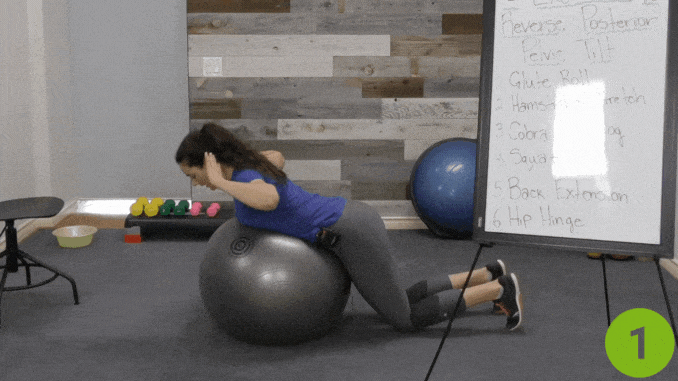
- Basically, lie on your stomach over a stability ball, knees on the floor.
- Hands by your ears, lift your upper body by engaging the lower back.
- After that, return with control.
- 1 set of 10–15 reps.
Strengthens the back muscles, essential for pelvic balance and spinal health.
6. Hip Hinge
- Stand with feet hip-width apart, hands by your ears.
- After that, bend slightly at the knees and hinge at the hips to bring your upper body forward.
- Keep your spine straight and then engage your abdominal muscles.
- 1 set of 10–15 reps.
Reinforces proper pelvic tilt control and body mechanics.
ISSA-Recommended Posterior Pelvic Tilt Exercises (Add-Ons)
These additional exercises are backed by the International Sports Sciences Association (ISSA) for correcting posterior pelvic tilt more completely:
7. Lunges
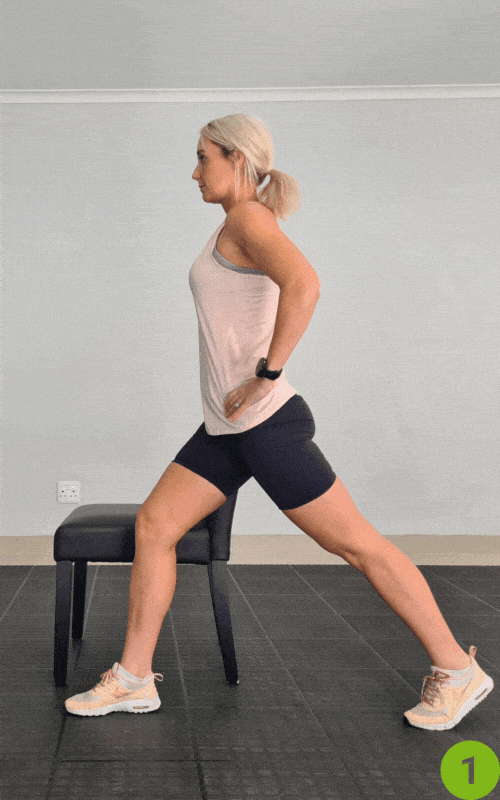
- Step your right leg forward, lowering until your front knee is at 90° and the other leg hovers above the floor.
- After that, push back to a standing position and switch legs.
Strengthens extensors (glutes & hamstrings) or knee extensors (quadriceps), improves pelvic tilt alignment, and then reduces lateral pelvic tilt.
8. Bird-Dog

- From a tabletop position on hands and then knees, extend your right arm and left leg in a straight line.
- In addition, hold briefly, return, and switch sides.
Builds core stability, which is vital to maintaining a neutral pelvic position.
9. Dead Bug
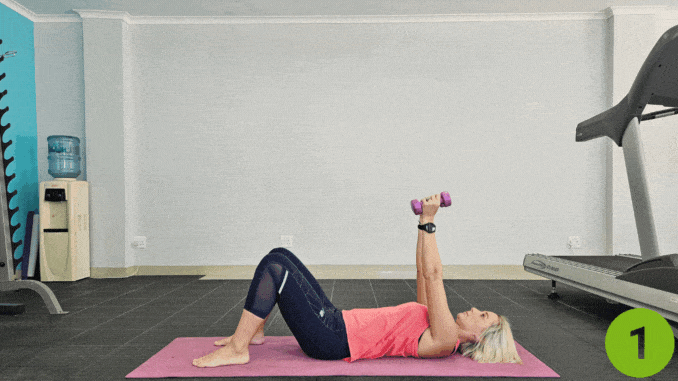
- Lie on your back, one knee raised above hips, arms pointed to the ceiling.
- After that, lower your right arm and left leg slowly to just above the floor, keeping the lower spine flat.
- Furthermore, return and switch sides.
Activates deep core muscles and then reinforces posterior tilt correction.
10. Kneeling Hip Flexor Stretch

- From a kneeling stance, bring your left leg forward into a lunge.
- Furthermore, place your hands on top of your bent knee.
- Tuck your pelvis and then lean forward slightly.
Stretches the hip flexors, a common culprit in posterior pelvic tilt.
11. Quadriceps Stretch

- Stand upright, grab your right foot behind you and pull toward your glutes.
- Keep knees aligned.
Quad tightness can restrict pelvic tilt range of motion.
12. Toe Touch (Standing Hamstring Stretch)

- From a standing stance, bend forward at the hips and then reach for your toes.
- Let your spine and then hips relax into the stretch.
A foundational stretching movement for tight hamstrings that influence posterior pelvic tilt.
Final Thoughts: Regain Control of Your Pelvis and Posture
To fix posterior pelvic tilt, consistency is key.
Incorporate the exercises above into your weekly routine—focusing on balance between mobility and strength.
Keep in mind:
- Prioritize core engagement and then maintain a neutral position throughout movements.
- Address both hamstring tightness and glutes, and weak hip flexors and lower back muscles.
- Furthermore, try the Thomas Test to monitor your pelvic posture progress.
Grab your Best Gluteus Medius Exercises digital download and start activating your glutes for better posture, reduced pain, and improved performance. Download today!
FAQs
What is posterior pelvic tilt and how can I tell if I have it?
Posterior pelvic tilt occurs when the pelvis tilts backward, causing the lower spine to lose its natural curve. This misalignment often results from tight hamstrings, weak hip flexors, and then overactive glutes or core muscles.
Common signs include:
- A flat lower back when standing
- Forward-thrusting hips
- Poor posture in both seated and standing positions
- After that, tightness in the lower back or hamstrings
- Try the Thomas Test or check your posture in a mirror to see if your pelvis appears rotated backward.
Can I fix posterior pelvic tilt with exercise alone?
In most cases, yes—posterior pelvic tilt exercises can correct the issue when done consistently.
A combination of:
- Stretching tight muscles (like hamstrings and glutes)
- Strengthening weak areas (like hip flexors, lower back, and core)
- Practicing posture awareness
Is often enough to realign the pelvis and restore a neutral position. However, in severe or painful cases, a consultation with a physical therapist is recommended.
Should I avoid any exercises if I have posterior pelvic tilt?
Yes. Avoid exercises that reinforce posterior tilt or overload the lower back.
Such as:
- Excessive crunches or sit-ups
- Prolonged seated cycling without posture awareness
- Heavy deadlifts or squats without core engagement
Instead, focus on pelvic tilt exercises that promote a natural curve in the spine and activate the glutes, core, and hip flexors.

